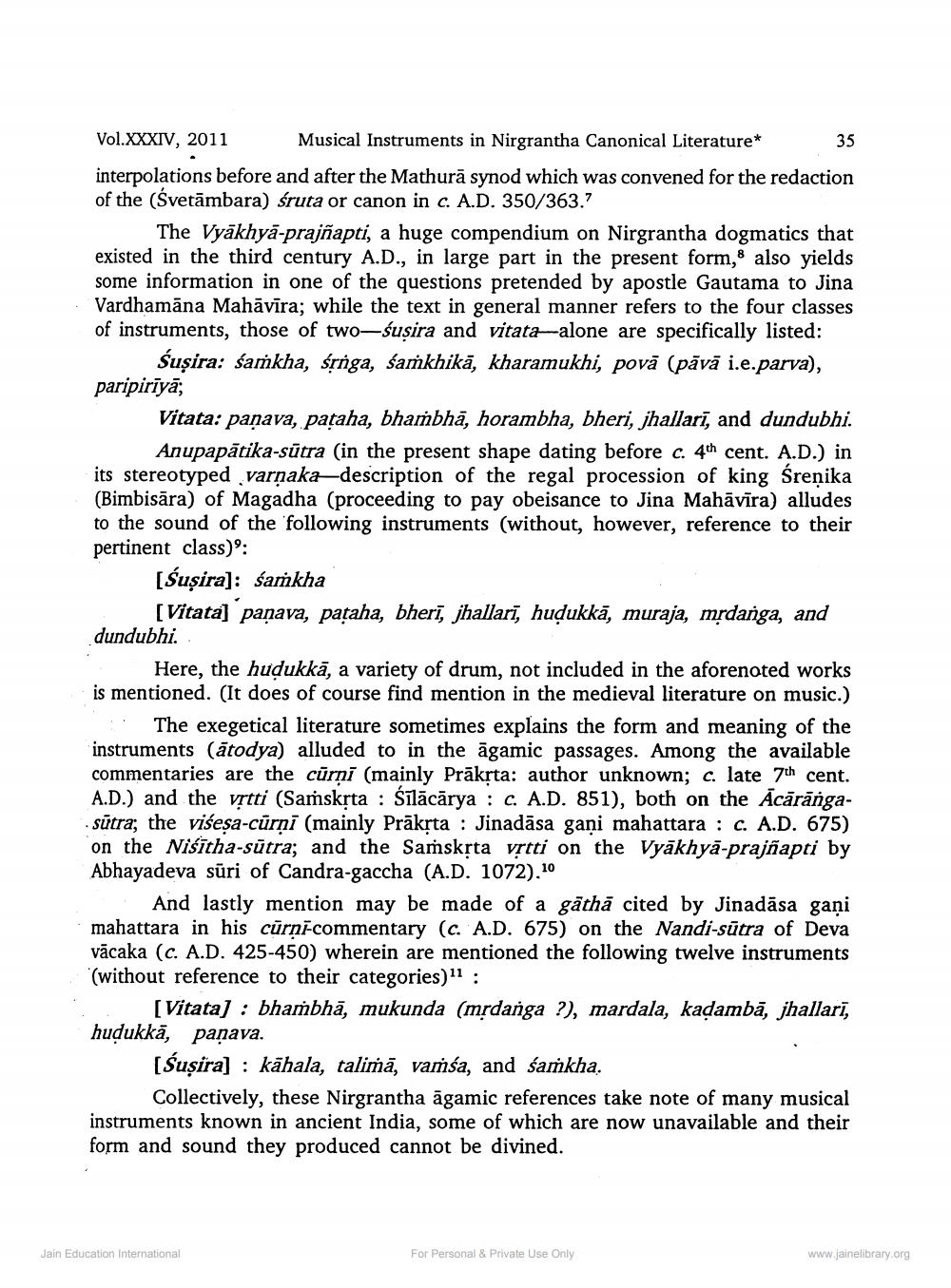________________
Vol. XXXIV, 2011
Musical Instruments in Nirgrantha Canonical Literature*
interpolations before and after the Mathura synod which was convened for the redaction of the (Svetämbara) śruta or canon in c. A.D. 350/363."
The Vyakhya-prajñapti, a huge compendium on Nirgrantha dogmatics that existed in the third century A.D., in large part in the present form, also yields some information in one of the questions pretended by apostle Gautama to Jina Vardhamana Mahāvīra; while the text in general manner refers to the four classes of instruments, those of two-śusira and vitata-alone are specifically listed: Suşira: samkha, śrnga, śamkhikā, kharamukhi, povā (pāvā i.e.parva), paripiriya,
Vitata: panava, pataha, bhambha, horambha, bheri, jhallari, and dundubhi.
Anupapātika-sutra (in the present shape dating before c. 4 cent. A.D.) in its stereotyped varnaka-description of the regal procession of king Śrenika (Bimbisāra) of Magadha (proceeding to pay obeisance to Jina Mahāvīra) alludes to the sound of the following instruments (without, however, reference to their pertinent class)9:
[Suşira]: samkha
[Vitata] panava, pataha, bheri, jhallari, huḍukkä, muraja, mṛdanga, and
dundubhi.
35
Here, the huḍukka, a variety of drum, not included in the aforenoted works is mentioned. (It does of course find mention in the medieval literature on music.)
The exegetical literature sometimes explains the form and meaning of the instruments (atodya) alluded to in the ägamic passages. Among the available commentaries are the curņi (mainly Präkṛta: author unknown; c. late 7th cent. A.D.) and the vṛtti (Samskṛta: Sīlācārya: c. A.D. 851), both on the Acărăngasutra, the visesa-curņi (mainly Prākṛta Jinadāsa gani mahattara: c. A.D. 675) on the Nisitha-sütra; and the Samskṛta vrtti on the Vyäkhya-prajñapti by Abhayadeva sūri of Candra-gaccha (A.D. 1072).10
And lastly mention may be made of a gatha cited by Jinadasa gaņi mahattara in his curni-commentary (c. A.D. 675) on the Nandi-sütra of Deva vācaka (c. A.D. 425-450) wherein are mentioned the following twelve instruments (without reference to their categories)" :
[Vitata] : bhambhä, mukunda (mrdanga ?), mardala, kaḍambā, jhallarī, hudukka, paṇava.
[śuṣira]: kahala, talima, vamsa, and famkha.
Collectively, these Nirgrantha ägamic references take note of many musical instruments known in ancient India, some of which are now unavailable and their form and sound they produced cannot be divined.
Jain Education International
For Personal & Private Use Only
www.jainelibrary.org




